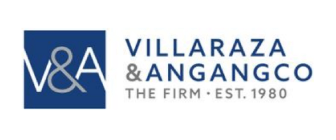The Philippine Intellectual Property Office (“IPOPHL”) recently issued Memorandum Circular No. 2025-009, or the Rules and Regulations for the Declaration and Creation of the Register of Well-Known Marks (“Rules”), providing an ex-parte procedure for the declaration of well-known marks that is independent of litigious proceedings, and creating a Register of Well-Known Marks (“Well-Known Register”) in the Philippines.
Under the Rules, trademark owners may either: (1) file a notarized application to declare their marks as well-known in the Philippines; or, (2) if the marks were previously declared as well-known by a competent authority in the Philippines or abroad, a manifestation to record such declaration in the Well-Known Register. Both the application and the manifestation will be evaluated based on the following criteria, wherein (a), (b), (c), and (d) are deemed mandatory:
a. The duration, extent and geographical area of any use and/or promotion of the mark, including advertising or publicity and the presentation, at fairs or exhibitions, of the goods and/or services to which the mark applies;
b. The market share, in the Philippines and in other countries, of the goods and/or services to which the mark applies;
c. The degree of the inherent or acquired distinction of the mark;
d. The quality, image, or reputation acquired by the mark; and
e. Any of the following:
i. the extent to which the mark has been registered in the world;
ii. the exclusivity of registration attained by the mark in the world;
iii. the extent to which the mark has been used in the world;
iv. the exclusivity of use attained by the mark in the world;
v. the commercial value attributed to the mark in the world;
vi. the record of successful protection of the rights over the mark;
vii. the outcome of litigations dealing with the issue of whether the mark is a well-known mark, if any; and
viii. the presence or absence of identical or similar marks validly registered for or used on identical or similar goods or services and owned by persons other than the person claiming that their mark is a well-known mark.
Evidence supporting the application or manifestation may pertain to both the Philippines and abroad but cannot be limited to foreign evidence only. It is recommended that the evidence be presented in an affidavit.
After examination, the application may either be allowed for publication or issued an office action. A response to an office action must be filed within two months from its mailing date. Otherwise, the application will be deemed abandoned unless revived within three months from the mailing date of the Notice of Abandonment.
An application or manifestation which complies with the aforementioned criteria will be published in the Philippine E-Gazette for one month. During this period, any person who may be damaged by the declaration can file a Notice of Third-Party Observation.
Once the mark is declared as well-known, the Bureau of Trademarks shall issue a Certificate of Well-Known Mark Declaration (“Certificate”) which serves as prima facie evidence of the well-known status of the mark with respect to the goods and services stated in the application. The declaration is valid for ten years, renewable for similar periods.
To maintain the declaration, the registrant must periodically prove continuous use of the mark in Philippine commerce, and its continuing well-known status, by submitting a declaration with proof to that effect within one year from the fifth anniversary of the declaration and upon each renewal. If the mark is already registered in the Trademarks Register, only evidence of well-known status is required provided that the registrant complies with the Declaration of Actual Use (“DAU”) requirements to maintain a trademark registration in the Philippines. The required evidence of use and well-known status must pertain to the Philippines but may also include foreign evidence.
Notwithstanding the issuance of the Certificate, a declaration of well-known status may be revoked based on the following grounds:
a. Motu propio, for failure to renew the declaration prior to its expiration or within the six month grace period after its expiration;
b. Motu propio, for failure to submit the required evidence of continuous use; and
c. By petition, due to the loss of the well-known status of the mark.
A successful declaration (1) simplifies administrative and judicial enforcement proceedings; (2) enhances legal protection; (3) deters against potential infringement; and (4) enhances brand value.
The Certificate may be used as prima facie evidence of a mark’s well-known status in administrative and court proceedings without the need to present voluminous evidence in support of such allegations.
A declaration of well-known status enhances the Philippine Intellectual Property Code’s protective provisions against dilution, misuse, and bad-faith applications/registrations. With the effectivity of the Rules, marks in the Well-Known Register are now also considered during examination aside from earlier filed and registered marks in the Trademarks Register. Inclusion in the Well-Known Register serves as notice of a mark’s well-known status, its prior appropriation, and actual ownership thereby deterring infringers. It also reinforces an established brand’s market position, boosts consumer trust and loyalty, and enhances a brand’s commercial value.
It must be emphasized that a declaration of well-known status does not replace the full legal benefits of a trademark registration. Registration remains to be the primary mode to acquire and protect trademark rights. Nonetheless, a valid declaration provides another level of protection and benefits that a simple registration does not. Thus, it is strongly recommended that both local and international brand owners review their IP portfolios and consider applying for a declaration of well-known status under the new Rules to strengthen their rights and market presence in the Philippines.


